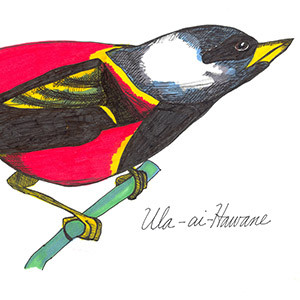A small Hawaiian honeycreeper. It liked the seeds and flowers of a particular sort of palm tree, and when those started to disappeared, so did the bird. Its name means “the red bird that eats the fruit of the hawane palm”. Last seen in 1892.
Tag: ink
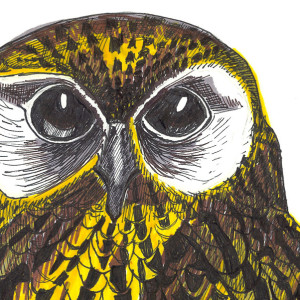
Laughing Owl
Look at how handsome he is. This is another New Zealand bird. His cry sounded like “a series of dismal shrieks frequently repeated”, or, alternately, as “a peculiar laughing cry, uttered with a descending scale of notes”. No one is really sure what happened to the Laughing Owl; by the time European naturalists starting paying attention to it it was…
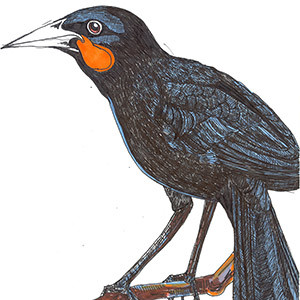
Huia
From New Zealand. The Maori prized their feathers and wore them in battle. They made jewelry, amulets and carved boxes especially to hold Huia feathers. They gave them to each other as tokens of friendship and of respect, and used them in funeral rites. At first only powerful chiefs were allowed to wear their feathers, but soon after the Europeans…
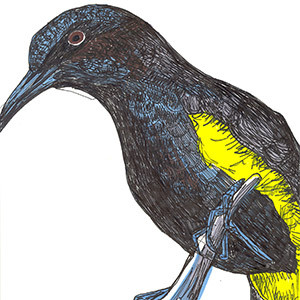
Ohahu O’O
John Zorn named an album after this guy. They were a kind of honeyeater. Not much is known about them. Their plumage was used in robes for the Hawaiian nobility. They were native to O‘ahu and disappeared around 1837. Thirty percent of all known recently extinct birds in the world were originally from Hawaii. 70 percent of all native bird species in the…
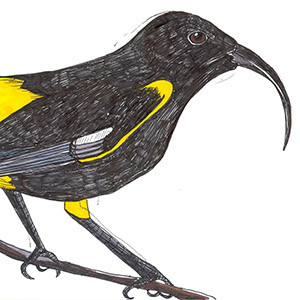
Mamo
Generations of Hawaiian Royalty trapped Mamos and used their yellow rump feathers for ceremonial royal war cloaks. The Kings of Hawaii supposed ruled that anyone who trapped a Mamo was prevented from killing it, and were required to turn them loose once their yellow feathers had been plucked. It’s impossible to say if this was an effective edict, or if…
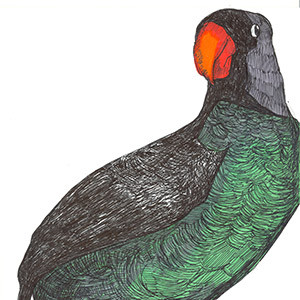
Mascarene Parrot
Based on a colored engraving by Jacques Barraband from F. Levaillant’s Histoire Naturelle des Perroquets. Vol 2, Paris, 1801-5. Wikipedia says: The Mascarene Islands (or Mascarenhas Archipelago) is a group of islands in the Indian Ocean east of Madagascar comprising Mauritius, Réunion, Rodrigues, Agaléga, Cargados Carajos shoals, plus the former islands of the Saya de Malha, Nazareth and Soudan banks.…
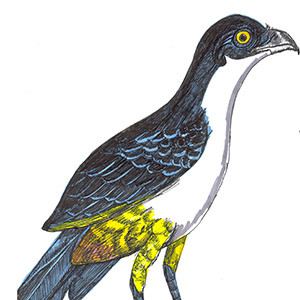
Delalande’s Coucal
He was from Madagascar. He was also known as a Snail-eating Coucal. He liked eating land snails, as his name implies. It only was known to science as a living bird for a very short time in the 19th century. Life got difficult quickly: its habitat was destroyed by deforestation, it had to compete for food with non-native invasive black rats, and it was…
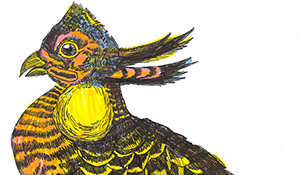
Heath Hen
The Heath Hen is one of the American birds on the list of extinct birds that helped build awareness about the existence of the phenomenon of extinction. It was a distinct subspecies of the Greater Prairie Chicken native to the East Coast, from New Hampshire down to Virginia. As a member of the grouse family, it was extremely common in…
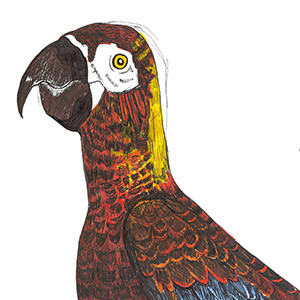
Cuban Red Macaw
Will you look at how lovely this guy is? This was a species of parrot native to Cuba and the Isla de la Juventud, an island off the Cuban coast. It was one of the smaller types of the macaws, only 18-20 inches long, and the last native Carribean macaw to go extinct. As befits a flashy bird like this…

